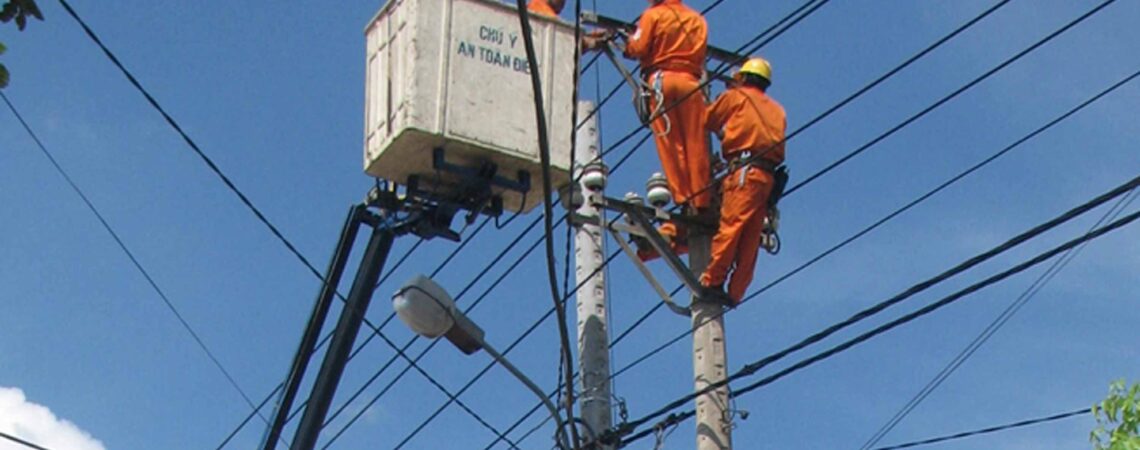According to the Ministry of Industry and Trade, the plan to use the 1-tier pricing for domestic electricity is expected to be applied from the beginning of next year. However, according to experts, to avoid confusion, every option needs to be public, transparent, and reasonable in calculating the average electricity price.
Experts say that, if the method of calculating the average electricity price is transparent and reasonable, the 1-tier plan will be effective.
The content of the Tier 1 electricity price calculation has just been informed by Deputy Minister of Industry and Trade Do Thang Hai at the regular press conference of the Government in July on August 3rd. The electricity price calculated according to the 1-tier plan has not yet been announced by this ministry. They did, however, gave an insight into the current average electricity price, which is 1,897 VND / kWh or 2,086.7 VND / kWh with VAT included. The second option might be divided into 5 tiers.

Many experts recommend a 3-tier electricity pricing
Precise pricing is what counts
In fact, the tier-1 plan electricity pricing has been mentioned for a long time by consumers and electricity industry experts with the desire to have clarity and fairness for consumers in electricity consumption. A small survey on Thanh Nien was conducted after the Ministry of Industry and Trade gave a plan with 2 ways to calculate electricity prices, up to 79% of readers participating in the survey chose the one-tier electricity payment plan, 21% chose the ladder plan.
It is natural to apply the 1-tier electricity pricing, which is equal to the average price, in accordance with the law. It’s wrong to make pricings higher than the average price.
–Dr. Ngo Duc Lam, former Deputy Director of Institute of Energy (Ministry of Industry and Trade
Publicize the average electricity price
Sharing with Thanh Nien, the representative of Vietnam Electricity (EVN) said that the point of the current calculating method is to ensure electricity savings and to provide reasonable support to the poor. It is expected that the electricity industry will adjust the price list down to 5 tiers according to the trend of the distance between groups being close to each other, reducing cross compensation between load parts.
At the same time, there will be another option of 1 tier, that is, customers only pay 1 price. The specific price is being discussed by the Ministry of Industry and Trade and other organizations, but it will definitely be higher than the average electricity price because if it is equal to the average electricity price, customers using a lot of electricity benefit from the 1-tier pricing, pushing the average electricity price down, and the electricity industry will suffer losses.
“Basically, in this modification, customers will have the right to choose their electricity pricing plan in accordance with their needs. After the Ministry of Industry and Trade calculates the equilibrium price to apply to the 1-tier electricity price, those who have previously used less than this level will have the mentality to choose the multi tiers tariff. In contrast, families who regularly use a lot will choose the 1- tier pricing. However, the equilibrium point will be properly built so that with the same amount of electricity, the user pays the same amount no matter what pricing option they opt for. The new electricity tariff will be public and transparent, ensuring the benefits of both parties: customers and providers”, he assured.
Dr. Ngo Duc Lam, former Deputy Director of the Institute of Energy (Ministry of Industry and Trade), said that it is reasonable to add the option to calculate electricity prices, adding choices for people, but both of the two options that the Ministry of Industry and Trade are proposing have shortcomings.
He analyzed: According to the Electricity Law, the electricity price must be calculated according to 1 price which is the average price. In the average price, all costs from power generation to power transmission, distribution, retail, and management of the power sector are included in the average price. In addition, EVN is also allowed to calculate a fixed interest rate, which serves reinvestment and welfare purposes in the power sector. On the other hand, electricity is a product that doesn’t require packaging or marketing. Thus, with only the average price, the business will surely make a profit.
“This is a special offer that no industry has. Therefore, it is natural to use the 1-tier pricing, equal to the average price, to comply with the provisions of the law. Any proposals for a price higher than the average is simply wrong ”, Dr. Ngo Duc Lam emphasized.
For that, if we go for 1-tier pricing, it is necessary to publicize and recalculate the average electricity price for a transparent and reasonable way. “At the same time, in parallel to use the stabilization fund to support poor and difficult households”, Mr. Lam proposed.
According to Dr. Ngo Duc Lam, it is fair to calculate electricity prices by 1 level. However, in order to achieve the goal of encouraging economical use of electricity, 3-tier pricing is the most reasonable as the rich use a lot to compensate for the poor who use less. Nevertheless, no matter which option you choose, the plan of the Ministry of Industry and Trade needs to be recalculated accordingly and if the plan is unreasonable, it does not make sense even if it is chosen by the people.
Source: Thanh Nien


